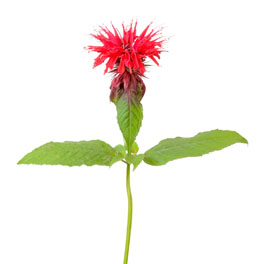This perennial plant that produces pink, red, and white or new double colored flowers can be seen in many gardens. Bee balm plants are aromatic mint plants commonly found in eastern North America.

Bee balms are herbaceous flowering plants that often go by different names such as
monarda didyma,
bergamot, and
oswego. They have bright-colored flowers with hues of red, pink, white, and purple. Hence, they are a major attraction to bees, hummingbirds, and butterflies. They are perennial plants that bloom in summers and grow as tall as 2 - 4 feet. Apart from their conspicuous appearance, they are also famous for aromatic and therapeutic purposes. These plants can be easily grown in homes with proper care.
These plants can be grown in ordinary garden soil or clay soils. However, it has been observed that they thrive better in dry alkaline soil. Sunlight is a must to facilitate its healthy growth. Using mulch for the plant is recommended, as it helps in retaining moisture in the soil, thereby preventing soil erosion. This is used by most gardeners for protecting the soil as it reduces the watering cycles. Fertilization is minimal as these plants need fertilization only once or twice a year. The fertilizer should comprise 1:1:1 NPK ratio (NPK - Nitrogen Phosphorus Potassium).
Plant Care Tips
- Open spaces are best for these flowering plants to grow. Select a place in your garden where there is full sun or partial shade. Prepare a well-drained soil mixture of perlite, peat moss, dry compost, vermiculite, and some manure. Before planting, dig up the site and fill in the hole with the soil mixture.
- The ideal planting season is early spring. Plant the sapling in the soil mixture and wet the soil with some water so that the soil settles down well around the roots. If you are planting in clusters, make sure that they are planted 8 - 12 inches apart. Cover the soil with mulch, as it helps in the retention of moisture and prevention of weeds.
- Watering cycles should be regular in bee balm care. See to it that the flowers do not get wet while watering as these plants are highly susceptible to powdery mildew - a kind of fungus that afflicts houseplants in late summers. Also, there are other menaces for this plant like aphids, which affect the roots, thereby rotting the plants. So, using systematic plant foods like, Advanced All-in-One Rose and Flower Care and pesticides is recommended to keep away pests like aphids and snails. All purpose liquid plant food is also a good fertilizer that facilitates healthier and faster growth of the plant.
- The plants start flowering from July and continue until late fall. In this period, pruning and trimming is very important to facilitate healthy flowering. Clean off the dead flowers and dried leaves regularly. Once the growth of the plant starts to slow down, cut the plants back to ground almost to 6 inches.
- Plants being from the mint family are invasive and spread to occupy every little space nearby. So, divide the plant once in three years by dividing the roots in late fall or in spring. This will also help in keeping the plant clean and tidy. In early spring, replanting can be done by discarding the older portions of the plant and planting new divisions of the plant 12 - 15 inches apart.
Uses
Bee balm finds a worthy mention in culinary and medical fields.
- Leaves are used for making herbal tea such as bergamot tea (commonly known as oswego tea and lemon balm tea) that aids in calming down jittery nerves. Herbs like valerian and chamomile are also added to this tea to increase the relaxation effect. Oswego tea is believed to be an appetizing agent that aids in curing digestion disorders. This is also supposed to palliate cramps during menstruation and reduces nausea.
- Therapeutic baths also use leaves of this flowering bush as it is an aromatic herbaceous plant. Just pluck a handful of leaves and tie them in a cloth. Place it in your hot water bath and enjoy the scented water! At times, breathing in the aromatic steam of the leaves aids in relieving throat afflictions like cough and sore throat. Ointments made of the leaves are also used for healing minor insect stings, cold sores, and acne.
- On cooking grounds, the plant is used as a pot herb for seasoning and flavoring food items. Flowers are used for garnishing vegetable salads!
A perfect addition to your garden, this plant is seen in full bloom during the late-summer months. A cynosure to the eyes, one must say!






 Bee balms are herbaceous flowering plants that often go by different names such as monarda didyma, bergamot, and oswego. They have bright-colored flowers with hues of red, pink, white, and purple. Hence, they are a major attraction to bees, hummingbirds, and butterflies. They are perennial plants that bloom in summers and grow as tall as 2 - 4 feet. Apart from their conspicuous appearance, they are also famous for aromatic and therapeutic purposes. These plants can be easily grown in homes with proper care.
Bee balms are herbaceous flowering plants that often go by different names such as monarda didyma, bergamot, and oswego. They have bright-colored flowers with hues of red, pink, white, and purple. Hence, they are a major attraction to bees, hummingbirds, and butterflies. They are perennial plants that bloom in summers and grow as tall as 2 - 4 feet. Apart from their conspicuous appearance, they are also famous for aromatic and therapeutic purposes. These plants can be easily grown in homes with proper care.